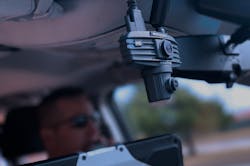Equipment Resolutions for the New Year
Most of the agency resolutions suggested revolved around equipment and training. Given the contemporary societal climate surrounding law enforcement, any resolution that increases training time or expands the focus of training to increase communication between an agency and the community it serves would have to be seen as good. In compliance with state minimum mandates, many agencies provide between 20 to 50 hours of in-service training each year. At least one trainer we spoke with suggested doubling that. He suggested that agencies commit to doubling whatever the state minimum is and doing the same thing with firearms training. Doing such would, of course, increase line items in budgets for training costs, personnel hours, equipment, supplies, outside instructor fees and more. But is it worth it? If you can demonstrate to your community that you are proactively taking action to exceed the state mandates, thereby attempting to increase the professionalism and efficiency of your officers, that ought to increase the positivity rate of your community’s perception of your agency. If nothing else, when a mistake does get made, you can demonstrate that you’re doing more than required to attempt to prevent mistakes from occurring.
With budgets strapped as they almost always are, and potentially in even worse shape given the “defund the police” political attempts, dollars allotted for equipment maintenance may be reduced—which is exactly the opposite of what should be happening. Shabby or broken-down equipment gives the impression of unprofessional or lazy personnel. In a lot of cases though, it’s got nothing to do with the officer’s motivation level or efforts. It has everything to do with agency budget and (sometimes) personnel motivation.
For example, uniforms are issued new and many agencies have either a uniform allowance for replacement or a quartermaster system for the same. Maintaining the uniforms day to day is the responsibility of the officer. Is there an improvement your agency can make in this regard? If your agency regularly replaces worn or damaged uniforms, then any deficiencies can fall on the shoulders of the officer. When are such deficiencies found? At roll call or during an inspection. If your agency isn’t big enough to have roll call, do you have regular inspections? If your agency does have a roll call every shift, are uniforms inspected? No, no one really likes the hardcase sergeant who nitpicks apart a uniform but ultimately s/he may be doing a lot of good. It’s long been known that professional and in-shape officers are less likely to be assaulted on the street; their arrestees are less likely to resist. If you look squared away, it leads to the assumption that you ARE squared away. A squared away uniform also lends itself to the impression that the agency overall is a professional one, and that the leadership demands personnel maintain a higher standard.
What about patrol vehicles? Hopefully, all agencies have enough budget dollars to replace vehicles as necessary, but it’s the “as necessary” that is so often argued between agency leadership and the political powers that be who have to approve the budget. Once the budget is done, the command staff and administration have to do the best they can with what they get. Let’s be ugly honest here: vehicles can be old, but still look good and serve without any problem. Everyone likes to have a new patrol car but all too often they are hard to come by (at best). If your agency doesn’t have a fixed and published process for determining when patrol vehicles need to be replaced, you might want to change that. Make that resolution.
Another area that was cited for improvement was firearms maintenance. Back in the 1980s when the U.S. Army bought the Beretta M9 handguns, every pistol had a round count—that being the number of rounds fired through it—whereupon Beretta suggested all the springs be replaced and the barrel too. A thorough inspection was to be performed on critical parts like the locking block, breech face, magazines, etc. But how many agencies actually count rounds? Does yours? One firearms instructor we spoke to keeps track of round counts on all of his personal and issued weapons (handgun and rifle). His agency doesn’t have a specified (that he was aware of) replacement protocol as long as the weapon still functioned. The challenge is this: you don’t find out there’s a problem with a weapon until it fails. Given the nature of the work, if it fails at the wrong time, it can be fatal to the officer who needed it to work. To avoid such potential tragedies, it’s best to keep track of how much use the weapon is getting. The recommendation is that each weapon be inspected at 5,000 rounds and replaced or refurbished (barrel, springs, magazines) at 20,000.
So ... those are some simple agency resolutions that could, in the long term, both save the agency money AND present to the community served a more professional image. Will you make those agency resolutions going into 2021?
About the Author
Lt. Frank Borelli (ret), Editorial Director
Editorial Director
Lt. Frank Borelli is the Editorial Director for the Officer Media Group. Frank brings 25+ years of writing and editing experience in addition to 40 years of law enforcement operations, administration and training experience to the team.
Frank has had numerous books published which are available on Amazon.com and other major retail outlets.
If you have any comments or questions, you can contact him via email at [email protected].



